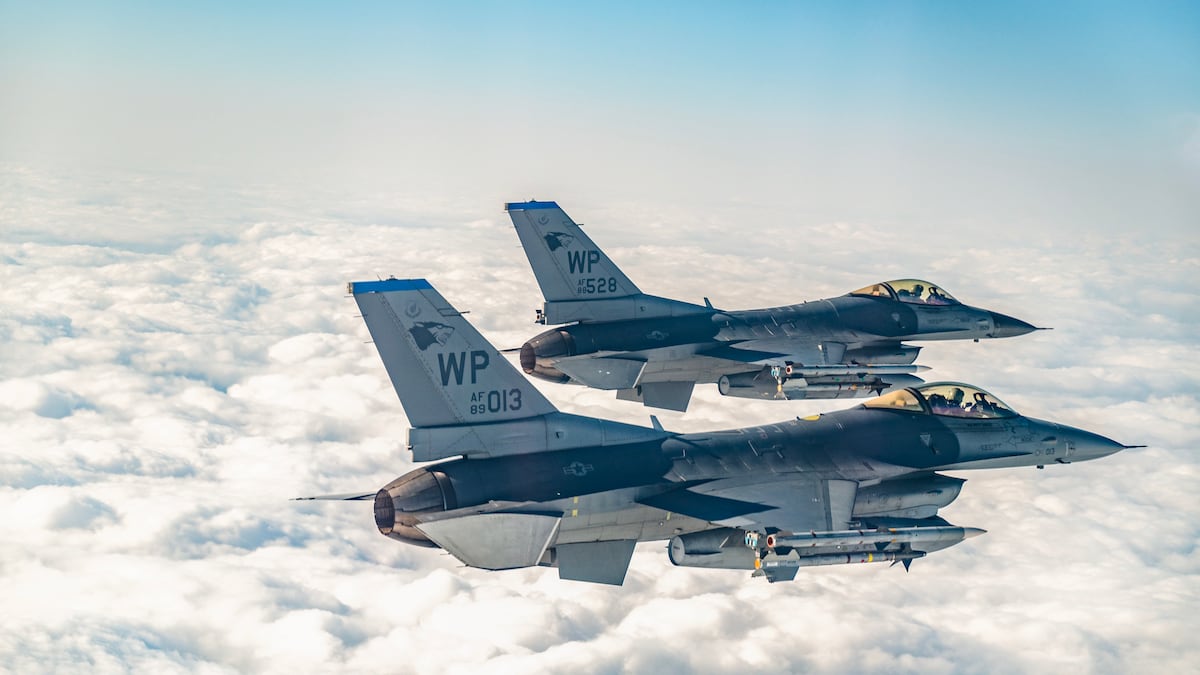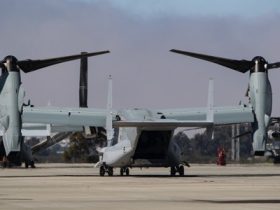An F-16C Fighting Falcon crashed off the southwestern coast of South Korea last December after a key instrument for measuring the jet’s position related to the horizon failed, an Air Force accident investigation found.
The F-16, whose pilot was assigned to the 35th Fighter Squadron of the 8th Fighter Wing at Kunsan Air Base, crashed during a training flight on the morning of Dec. 11, 2023, causing the loss of the $28 million fighter. The pilot safely ejected from the jet before the crash, sustaining no injuries, and was rescued by South Korean maritime forces.
The pilot was flying in formation along with three other F-16s as part of a defensive counter-air training mission, according to the report released Sept. 26. But the weather was poorer that day than expected, and the pilot flew through dense cloud coverage.
About 13 minutes into the flight, the report said, the jet’s attitude indicator stopped working due to the failure of its embedded GPS inertial navigation system. The attitude indicator is an instrument that tells the pilot where the horizon is relative to the aircraft.
The word “FAIL” appeared on the jet’s center display unit. The pilot switched to a backup attitude indicator, but that instrument was likewise glitching and yielding incorrect information, disorienting him, the report said.
That backup system indicated the fighter’s nose was high, but showed its altitude continued to decline. The pilot later told the investigation board he became “task saturated” — or overloaded with too much information to process and things to do at once — trying to keep the jet under control.
A wingman helped guide the pilot down, hoping to break through the clouds. But weather data later showed the cloud cover was so thick — as low as about 795 feet above sea level — that he would not have been likely to reach clear skies, the report said.
As the pilot reached 3,000 feet above sea level, he tried to level off but his disorientation became worse. As the jet neared the water, the pilot grew increasingly worried that his instruments were unreliable and ejected, 19 minutes after takeoff and 1,730 feet above sea level.
Little wreckage from the F-16 has so far been recovered, the report said. The jet’s black box containing more precise flight data was not found, nor was the Northrop Grumman-made GPS unit in the attitude indicator that is believed to have failed.
Investigators couldn’t determine why the GPS unit malfunctioned, the report said, but that it most likely lost power or experienced power fluctuations, as happened in other F-16 mishaps. That unit’s failure was the primary cause of the crash, the report said. The pilot’s need to rely on a backup attitude indicator that was also unreliable, and his disorientation, substantially contributed to the crash.
The 7th Air Force, which oversees Kunsan, said that the Air Force is working to limit the effects of temporary power fluctuations on F-16 flight instrument systems. Air Combat Command is also increasing its training to help pilots catch and fix problems with flight instruments during emergency situations, the 7th said.
Stephen Losey is the air warfare reporter for Defense News. He previously covered leadership and personnel issues at Air Force Times, and the Pentagon, special operations and air warfare at Military.com. He has traveled to the Middle East to cover U.S. Air Force operations.
Read the full article here







Leave a Reply